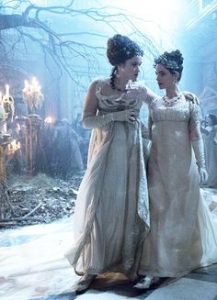
One of the nifty things about being friend with Lady Pole, among myriads, is her excellent taste in literature, and her openness about discussing books. So a little while ago, we came up with the idea of a book discussion here at the Free For All where we could air our real views about some of those “classic” books that everyone is “supposed to read”…and supposed to value/treasure/enjoy.
The truth of the matter is that even when two people read the same book…no two people read the same book. They bring their lives with them into the text, and that totally influences how they perceive, digest, and remember the book. And this was something Lady Pole and I discovered as we chatted about some of those classics that we had encountered in our lives. So here is a much more mature, adultish version of that discussion for you to enjoy. While we are very pleased with our own opinions, what we really hope you, dear readers, take away from these discussions is the realization that: 1) Reading “classics” can be really fun and meaningful and significant (that’s part of what makes them “classics” after all!), 2) That you are under no obligation whatsoever to enjoy the classics that you read, as you’ll soon see, and 3) That your own story is critically important to how you read any book. So here is our chat–we sincerely hope it encourages you to have a conversation of your own!
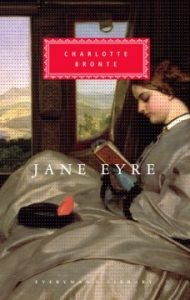
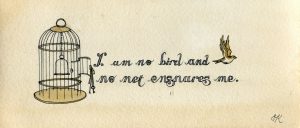
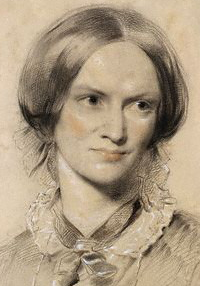 Arabella: I had been told by a number of educators in my life that I had to read Jane Eyre, but while I was excited to make them happy, I was also expected something of a 19th-century moralistic slog, like a number of other books I had been assigned to read over the years (I’m looking at you, Little Dorrit). And, I’ll admit, the early part of the book was much of what I had been expecting, particularly the scenes at Lowood School, where there is a considerable amount of discussion about being good and virtuous…but then, I realized that something very different way happening here. Jane wasn’t terribly interested in learning how to behave. Or to please others. She had a moral compass that was far stronger and far more discerning than that. And it meant that her story was going to be vastly different from what I had expected. And by the time she left Lowood to take up residence at Thornfield Hall, I loved seeing the world through her eyes. Especially, I loved how honest she was. I remember very distinctly a chapter opening when Jane admitted she loved Rochester, even though she knew she could never do anything about it because of the huge differences in power and class that stood between them. She didn’t downplay her feelings, or deny them to make things easier, which made her a startling voice in literature, even as a twentieth century reader. I myself had (have) an enormous crush on Rochester, so the parts of the book without him were a bit of a challenge for me then (though not so much now), but, like Lady Pole, I thought their reunion was perfect and satisfying and wonderful.
Arabella: I had been told by a number of educators in my life that I had to read Jane Eyre, but while I was excited to make them happy, I was also expected something of a 19th-century moralistic slog, like a number of other books I had been assigned to read over the years (I’m looking at you, Little Dorrit). And, I’ll admit, the early part of the book was much of what I had been expecting, particularly the scenes at Lowood School, where there is a considerable amount of discussion about being good and virtuous…but then, I realized that something very different way happening here. Jane wasn’t terribly interested in learning how to behave. Or to please others. She had a moral compass that was far stronger and far more discerning than that. And it meant that her story was going to be vastly different from what I had expected. And by the time she left Lowood to take up residence at Thornfield Hall, I loved seeing the world through her eyes. Especially, I loved how honest she was. I remember very distinctly a chapter opening when Jane admitted she loved Rochester, even though she knew she could never do anything about it because of the huge differences in power and class that stood between them. She didn’t downplay her feelings, or deny them to make things easier, which made her a startling voice in literature, even as a twentieth century reader. I myself had (have) an enormous crush on Rochester, so the parts of the book without him were a bit of a challenge for me then (though not so much now), but, like Lady Pole, I thought their reunion was perfect and satisfying and wonderful.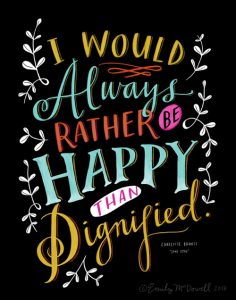 Lady Pole: I tried to read this book a few years ago. I have had wonderful discussions with Arabella about digging into a dense, rich book in the wintertime and felt Jane Eyre was to be that winter’s book. I started it. I enjoyed it. I put it down. I didn’t pick it back up again. If you press me for the reason why I didn’t finish it I really couldn’t give you one. My best guess is that I had a moment where I turned into Dug from Up and another book (or my Netflix queue, or something) caught my eye and… squirrel! That was it. The lovely ribbon bookmark that came stitched into my edition was still in the same place where I left it, but I’m happy to say that Jane, ever the stalwart heroine welcomed me back to that place and guided me on through the rest of the book. This time, there was no stopping me. I can’t tell you how fascinating I found Jane. I didn’t always agree with her choices (I guess I have more human foibles in me than her; let’s just say the story would have been much shorter had I been in her shoes…), but I’ve yet to come across a literary heroine that I respect as much. Bronte didn’t take the easy way out; Jane didn’t have the looks, money or other Victorian qualities that would make a heroine successful, but she had her morals, her own brand of plucky perseverance, and a willingness to withstand multiple hardships fairly stoically and this, to me, made her one of the best heroines I’ve read in a long time. Yes, there was a certain amount of deus-ex-machina in the ending, but nothing seemed out of character for Jane and, even though much of her late fortune came seemingly out of nowhere, it still felt as though she earned it, making the ending ultimately very satisfying. Oh, and the marriage proposal scene easily ranks as my favorite of all time in literature (and that includes both proposals in Pride and Prejudice).
Lady Pole: I tried to read this book a few years ago. I have had wonderful discussions with Arabella about digging into a dense, rich book in the wintertime and felt Jane Eyre was to be that winter’s book. I started it. I enjoyed it. I put it down. I didn’t pick it back up again. If you press me for the reason why I didn’t finish it I really couldn’t give you one. My best guess is that I had a moment where I turned into Dug from Up and another book (or my Netflix queue, or something) caught my eye and… squirrel! That was it. The lovely ribbon bookmark that came stitched into my edition was still in the same place where I left it, but I’m happy to say that Jane, ever the stalwart heroine welcomed me back to that place and guided me on through the rest of the book. This time, there was no stopping me. I can’t tell you how fascinating I found Jane. I didn’t always agree with her choices (I guess I have more human foibles in me than her; let’s just say the story would have been much shorter had I been in her shoes…), but I’ve yet to come across a literary heroine that I respect as much. Bronte didn’t take the easy way out; Jane didn’t have the looks, money or other Victorian qualities that would make a heroine successful, but she had her morals, her own brand of plucky perseverance, and a willingness to withstand multiple hardships fairly stoically and this, to me, made her one of the best heroines I’ve read in a long time. Yes, there was a certain amount of deus-ex-machina in the ending, but nothing seemed out of character for Jane and, even though much of her late fortune came seemingly out of nowhere, it still felt as though she earned it, making the ending ultimately very satisfying. Oh, and the marriage proposal scene easily ranks as my favorite of all time in literature (and that includes both proposals in Pride and Prejudice).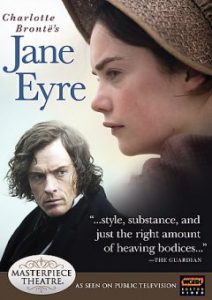 Arabella: I knew nothing about this book going into it, except for the fact that it caused a big scandal upon its release because it advocated for an independent woman, and for a moral, fundamental good over social “goods” and “evils”. But I never expected to find such a frank, self-confident, and marvelous heroine in its pages, or a love story that still strikes me as a wholly unique one, even today. Since then, I’ve seen a number of adaptations of the book, none of which do it real justice, though the one with Ruth Wilson and Toby Stephens comes pretty close, especially in terms of Jane’s whole story.
Arabella: I knew nothing about this book going into it, except for the fact that it caused a big scandal upon its release because it advocated for an independent woman, and for a moral, fundamental good over social “goods” and “evils”. But I never expected to find such a frank, self-confident, and marvelous heroine in its pages, or a love story that still strikes me as a wholly unique one, even today. Since then, I’ve seen a number of adaptations of the book, none of which do it real justice, though the one with Ruth Wilson and Toby Stephens comes pretty close, especially in terms of Jane’s whole story.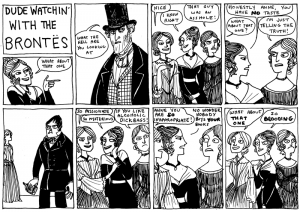

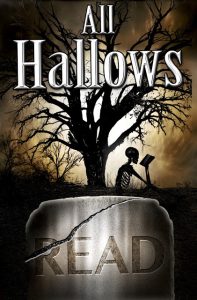
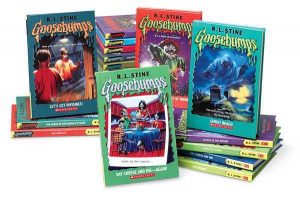 Goosebumps, by R.L. Stine is probably what most people think of when they think of scary stories for kids. This perennially popular
Goosebumps, by R.L. Stine is probably what most people think of when they think of scary stories for kids. This perennially popular 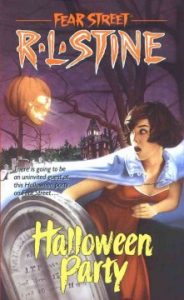 by R. L. Stine, a slightly scarier series that was designed for teens rather than emerging chapter-book readers. This series whiled away uncountable hours during my formative reading years and to me, it will always be the series I most associate with Stine. Fortunately, there are still some copies
by R. L. Stine, a slightly scarier series that was designed for teens rather than emerging chapter-book readers. This series whiled away uncountable hours during my formative reading years and to me, it will always be the series I most associate with Stine. Fortunately, there are still some copies 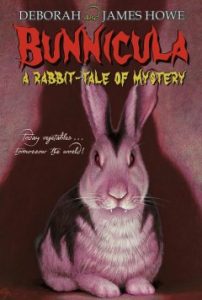 I did a search for Bunnicula on the Free for All and was completely appalled that we haven’t mentioned this seminal kids’ series here before. Given both my and Arabella’s mutual love for this book and it’s subsequent follow-ups, I’m really not sure how that happened, but I’m going to rectify that glaring, borderline-criminally-negligent, absence today. Bunnicula, by James and Deborah Howe is quite possibly the best spooky series for kids. It is about a rabbit who gets adopted by a family after finding him in a movie theater that was showing Dracula, hence they gave him the name Bunnicula. The pets already in residence at the family’s home, an erudite dog of letters named Harold (he is the one “writing” the story) and a delightfully well-read cat named Chester, have their suspicions about the new family member. After vegetables in the fridge start becoming bleached-white overnight (coincidentally the only time the new rabbit is truly active) Harold and Chester have their suspicions that Bunnicula is, in fact, a vampire. I have it on
I did a search for Bunnicula on the Free for All and was completely appalled that we haven’t mentioned this seminal kids’ series here before. Given both my and Arabella’s mutual love for this book and it’s subsequent follow-ups, I’m really not sure how that happened, but I’m going to rectify that glaring, borderline-criminally-negligent, absence today. Bunnicula, by James and Deborah Howe is quite possibly the best spooky series for kids. It is about a rabbit who gets adopted by a family after finding him in a movie theater that was showing Dracula, hence they gave him the name Bunnicula. The pets already in residence at the family’s home, an erudite dog of letters named Harold (he is the one “writing” the story) and a delightfully well-read cat named Chester, have their suspicions about the new family member. After vegetables in the fridge start becoming bleached-white overnight (coincidentally the only time the new rabbit is truly active) Harold and Chester have their suspicions that Bunnicula is, in fact, a vampire. I have it on 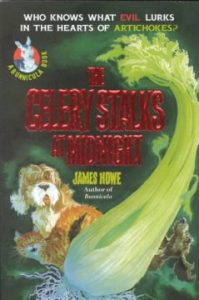 My personal favorite is Howliday Inn,
My personal favorite is Howliday Inn,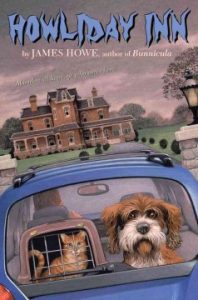 but I recommend starting with the first book, simply titled
but I recommend starting with the first book, simply titled 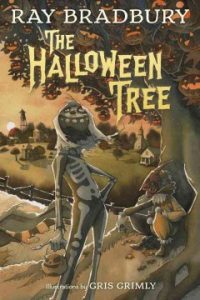
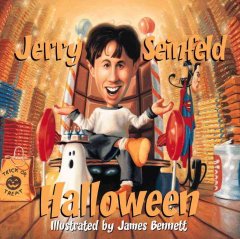
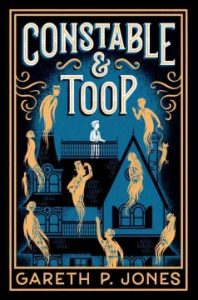
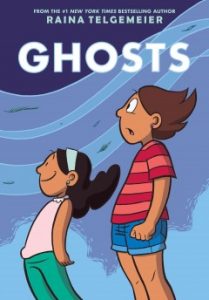
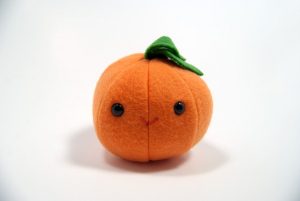




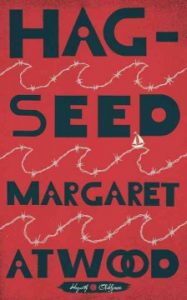 Hag-Seed
Hag-Seed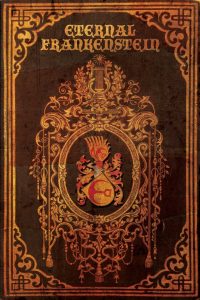 Eternal Frankenstei
Eternal Frankenstei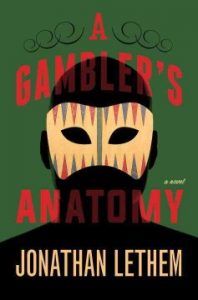 A Gambler’s Anatomy
A Gambler’s Anatomy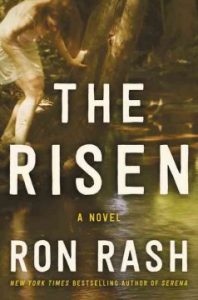 The Risen
The Risen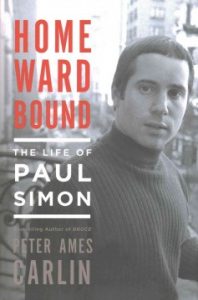 Homeward Bound
Homeward Bound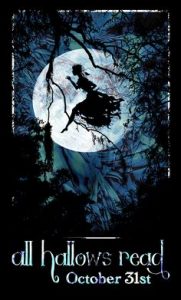
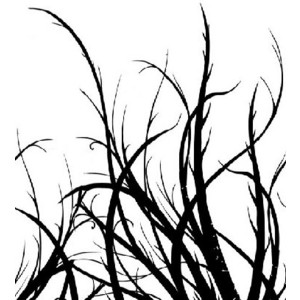
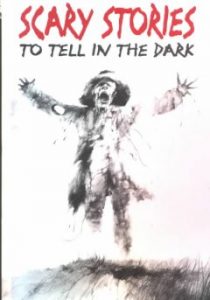 Scary Stories to Tell In The Dark
Scary Stories to Tell In The Dark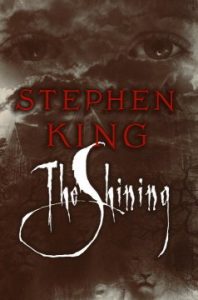
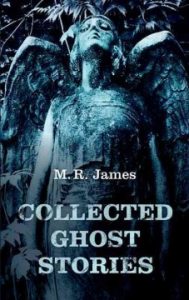 Collected Ghost Stories by M.R. James
Collected Ghost Stories by M.R. James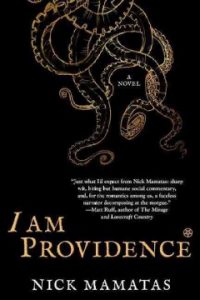
 I had a perfectly nice blog post planned for today’s Wednesday @ West. But when I got to work this morning, a brief conversation with my co-workers relieved that we are all feeling a rather high level of anxiety over the upcoming election. My gut told me that we are not alone. A quick Google search confirmed my suspicion.
I had a perfectly nice blog post planned for today’s Wednesday @ West. But when I got to work this morning, a brief conversation with my co-workers relieved that we are all feeling a rather high level of anxiety over the upcoming election. My gut told me that we are not alone. A quick Google search confirmed my suspicion.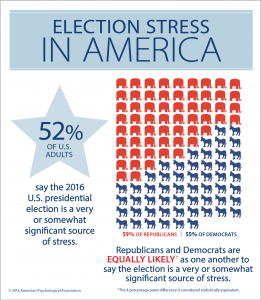 The American Psychological Association recently asked about election related stress in their annual Stress in America Survey. They found that a majority (52%) of Americans are finding this year’s election to be a “somewhat” or “significant” source of stress. And the stress is not limited to voters from one party. The APA is so concerned about these results that they have published
The American Psychological Association recently asked about election related stress in their annual Stress in America Survey. They found that a majority (52%) of Americans are finding this year’s election to be a “somewhat” or “significant” source of stress. And the stress is not limited to voters from one party. The APA is so concerned about these results that they have published 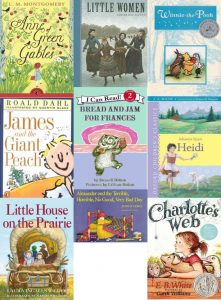 Read books. I’m not just being biased here. Science backs me up. Studies have shown that reading is the
Read books. I’m not just being biased here. Science backs me up. Studies have shown that reading is the 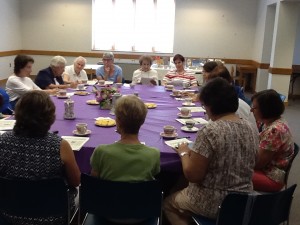 Drink tea. Unsurprisingly perhaps, it is a
Drink tea. Unsurprisingly perhaps, it is a 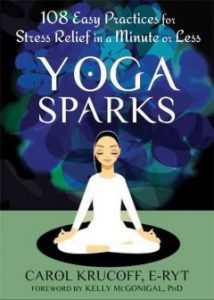 Do yoga. Even the Wall Street Journal has suggested that Americans will need some stress relief after tonight’s final presidential debate. They are imploring readers to
Do yoga. Even the Wall Street Journal has suggested that Americans will need some stress relief after tonight’s final presidential debate. They are imploring readers to 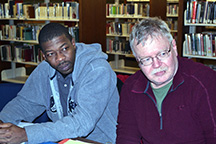 Help others.
Help others.  Immerse yourself in music. Ah yes, music, both
Immerse yourself in music. Ah yes, music, both 

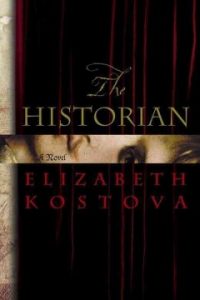
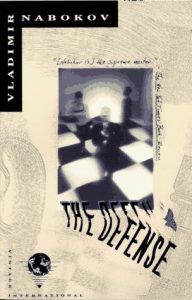 The Defense
The Defense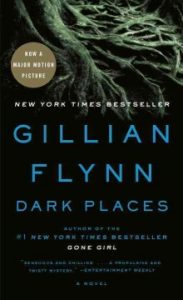 Dark Places
Dark Places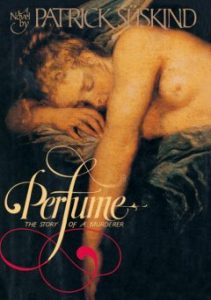 Perfume, the Story of a Murderer
Perfume, the Story of a Murderer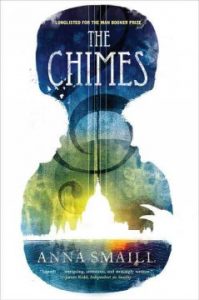
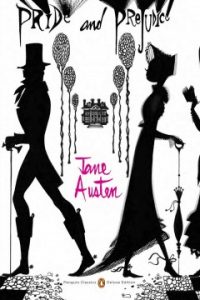
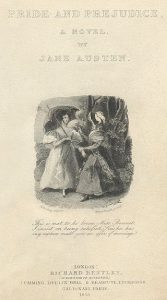 Lady Pole: I fell in love. This was one of the first classics I read on my own that wasn’t part of assigned reading, so that may have also heightened my enjoyment of the text, but for me, Elizabeth Bennet was the be-all-end-all of literary heroines. In a lot of ways, she still is. She is flawed, but strong. Level-headed and yet somehow headstrong at the same time. She wants love and she wants it on her own terms. She was exactly what my teenaged-self was looking for at the time and continues to be a pretty high standard for my adult self when it comes to literary heroines by comparison. I also enjoyed Austen’s writing-style. The comedy of manners remains as one of my favorite types of books to read and Austen’s wit is a large part of why this book resonated with me.
Lady Pole: I fell in love. This was one of the first classics I read on my own that wasn’t part of assigned reading, so that may have also heightened my enjoyment of the text, but for me, Elizabeth Bennet was the be-all-end-all of literary heroines. In a lot of ways, she still is. She is flawed, but strong. Level-headed and yet somehow headstrong at the same time. She wants love and she wants it on her own terms. She was exactly what my teenaged-self was looking for at the time and continues to be a pretty high standard for my adult self when it comes to literary heroines by comparison. I also enjoyed Austen’s writing-style. The comedy of manners remains as one of my favorite types of books to read and Austen’s wit is a large part of why this book resonated with me.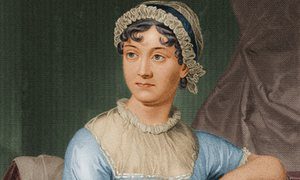 Lady Pole: I went into my first reading fairly uninfluenced, which is rare for me with a classic. I have since read this book numerous times, including during a freshman English class in college with one of my favorite professors, where I learned just how funny Austen could really be (particularly through Mr. Collins’ absurdities) and on a cruise where it was a refreshing change to visit an old favorite after reading about the ill-fated cruise passengers in Kurt Vonnegut’s
Lady Pole: I went into my first reading fairly uninfluenced, which is rare for me with a classic. I have since read this book numerous times, including during a freshman English class in college with one of my favorite professors, where I learned just how funny Austen could really be (particularly through Mr. Collins’ absurdities) and on a cruise where it was a refreshing change to visit an old favorite after reading about the ill-fated cruise passengers in Kurt Vonnegut’s 